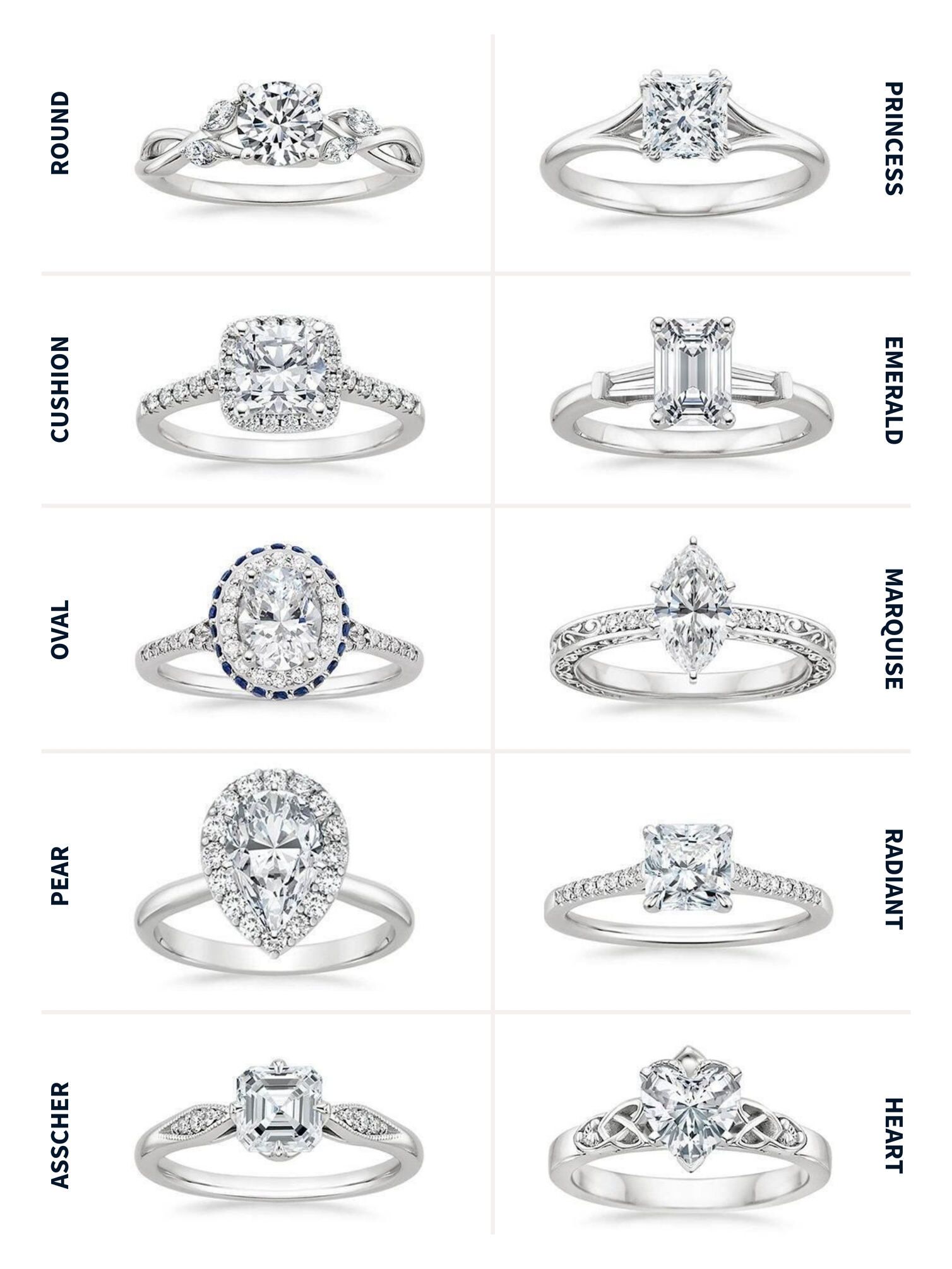Engagement Rings Fundamentals Explained
Engagement Rings Fundamentals Explained
Blog Article
The 9-Minute Rule for Engagement Rings
Table of ContentsThe 9-Minute Rule for Engagement RingsThe Ultimate Guide To Engagement RingsSome Of Engagement RingsFascination About Engagement RingsExcitement About Engagement RingsA Biased View of Engagement Rings
Tension-style settings likewise offer much far better safety for the gemstone. Most tension-style setups are made for round great rubies or various other rounded gemstones, however they can be customized to fit several other shapes. The setup can additionally be customized to have accent treasures around the centre rock or to allow for a side rock on each side of the centre stone.Develops an optical illusion of the centre gems hanging in the air. If it has prongs, they can come to be loose with wear. This is easily fixed by having the ring routinely cleansed and examined by a jeweler.
Some Of Engagement Rings
The initial ring with a real tension setup was made in Vreden, Germany in the 1970s. Ursula Exner and well-known artist Walter Wittek collaborated to layout and make this first ring. In the adhering to years, other jewelers designed their very own stress settings, as well as the a lot more secure and functional tension-style settings.

This provides the ring a basic, but fashionable beauty that works well for both males and females's wedding event rings, in addition to interaction rings. The flush setting is sometimes also called a gypsy setting. We can't state for certain exactly how it came to have that name, however maybe it is since the setting stands for a cost-free spirit.
The Definitive Guide for Engagement Rings
Flush settings function well for round, square or rectangular gemstones, but they can be hard to adjust to specific fancy cuts, for instance, a heart-shaped diamond. Keeps the gems safe and safe and secure.
Frequently impractical for heart-shaped treasures and a few other gems with elegant cuts. Rings with flush or gypsy settings have actually been around considering that the late 1800s.
Solitaire involvement rings have just one centre gemstone on a plain band. Several other interaction rings, however, additionally have accent gems. Accent treasures can be diamonds or a range of various other gemstones. They usually vary in dimension from little to moderate and are established close together. Accent gems are included in involvement rings particularly to raise radiance and sparkle.
What Does Engagement Rings Do?
There are 4 setups that are extensively used to hold accent gemstones. The castle setting gained its name due to the fact that from the side it looks like the battlements in addition to a castle wall. This setting is additionally regularly called the scallop setup. Castle settings are made directly on the shank of the ring.
The prongs in a castle setup can be directly and down with simple rounded tips or they can be cut at an angle to make sure that they appear like fishtails. These fishtail prongs can also be called French cut prongs. Castle settings are very flexible. They can be established completely around the shank, simply positioned throughout the ring's shoulders or used to produce a halo around the centre gemstone.
10 Simple Techniques For Engagement Rings
If it is well made, the reduced scalloped edge of the castle setup can also create an optical illusion. It permits the sides of the gemstones to be conveniently seen and produces the impression that the treasures are being held in an unseen setting.
Develops the impression of an undetectable setting. The tiny prongs Continued can become loose. We advise that rings with the castle setting be cleansed occasionally by a jeweler, so that the prongs can be inspected.
The prongs on a castle setting check over here can capture on clothing, yet this is rare since the prongs are smooth. The castle setup can be used to make attractive infinity rings. The initial infinity rings were designed in the 1960s. Those original rings, like eternity rings today, have a row of very closely established gems entirely encircling their shank.

10 Easy Facts About Engagement Rings Explained
The grain setup is a really secure setting. The sides of the channel protect the accent gems from bumps and scrapes and the beaded prongs rarely become loose. One drawback of the grain setting is that the gems receive much less light since they are set down in the channel. This leads to the gems creating slightly much less radiance and shimmer.
Every gem in the grain setup is surrounded by 4 shiny beads that are degree with the top of the shank. These grains capture the light and emit their own shimmers in every instructions. The grains' sparkles along with Bonuses the brilliance and sparkles generated by the accent treasures bring the grain setting to life and provide it continuous glimmers.
They can utilize it to make endless time rings, in addition to to decorate the simple shank or even more complex split shank that some interaction rings have. In the basic grain setup, the accent treasures are established in one straight line. Occasionally, though, jewellers will certainly raise the glimmer on an interaction ring by adding 2 or even more identical lines of bead collection treasures.
Report this page